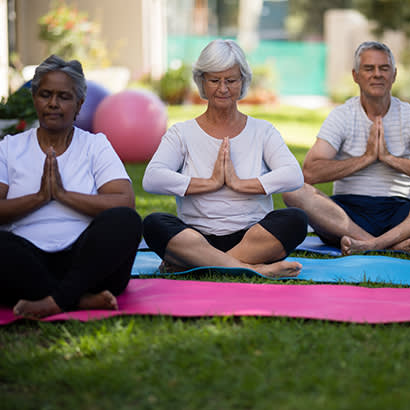
For an enhanced digital experience, read this story in the ezine.
In fall of 2019, more than 5,000 older adults and 45 directors worked together to rejuvenate senior centers in north Texas. Currently, 54.1 million Americans are 65 years or older and make up 16 percent of the population. Renewed programs and services are needed to support this growing population’s physical and psychosocial (psychological and social) health and well-being needs.
Senior Center Engagement
Surveys and focus groups were conducted in urban, suburban and rural senior centers and worship sites to learn about center participation interests and patterns. Senior center participants described facilities and programs as: “state of the art,” “keeps me active,” “special places,” “friends,” “lifelong learning,” “travel opportunities,” and “meeting health and nutritional needs”; as well as “boring activities,” “a waste of time,” “new facilities needed and “nothing better to do.”
While more than 11,000 U.S. senior centers serve 1 million older adults per day, little is known about who attends and why. Like national trends, 69 percent of the survey and focus groups’ senior center participants were female and 58 percent attended three times a week. Fitness and exercise programs were primary reasons for attending. Centers with fitness and aquatics facilities were preferred. Travel, educational, game, entertainment, arts, crafts, dancing, sewing, music, sports and outdoor programs drew engagement at suburban centers. Nutrition, health, medical, transportation and social services were key draws for participation in urban and rural areas.
The average age of senior center participants is increasing nationally. In this study, adults’ ages ranged from 51 to 95 years with 79 years being the average age. Most centers were open to individuals ages 50 and older, while some programs had financial, age and residential restrictions. About 65 percent had center membership fees and offered scholarships. Center participants were most often white, followed by Black, mixed race and Asian, with 21 percent identifying as Hispanic. Many participants were above poverty levels and had high school diplomas. Younger participation trends toward suburban, larger, new and comprehensive senior centers.
And Then Came the COVID-19 Pandemic
During the coronavirus (COVID-19) pandemic, senior centers closed in February or March 2020, and most remained closed until January 2021. Nutritional services were available as drive-thru service continuously during the pandemic even though centers were closed. Participants often created small lunch groups in nearby parks and were often seen walking or exercising after eating. Outdoor walking trails were popular when indoor tracks closed. Some center participants travelled around the world and learned new skills virtually and loved it. Exercise, fitness, music, crafts, dancing, entertainment and cooking programs continued with live video; on-demand, prerecorded programs; and booklets. Older adults could check out tablets and laptops along mobile hot spots to stay connected. Adult coloring books, meditation and relaxation activities were disseminated to relieve stress.
Outreach to participants by phone, video and home-delivered materials, as well as through peer connections, were instituted by nearly every center. Senior center and public health staff worked collaboratively, sharing health and vaccine information. Services offered during the pandemic helped center participants meet basic needs (food, utilities, shelter, clothing and safety), maintain mental and emotional health, engage in physical activity, and stay connected. During the pandemic shelter-in-place mandates, nearly all senior center participants found services were needed, helpful and appreciated.
What’s Next?
In January 2022, 21 directors, who were part of this rejuvenation investigation, were asked if the COVID-19 pandemic revitalized senior centers. In summary, most felt older adults of color, in poor health and with lower socioeconomic backgrounds needed additional services and they found ways to secure them. Some participants were busy caring for grandchildren while their parents worked. Intergenerational arts and crafts, music, exercise, dancing and cooking activities were offered virtually with daycare coordinators. New hobbies were introduced, such as learning to play an instrument or joining a gospel sing-along, and are continuing as participants return to centers. Outdoor programs like hiking, bird watching, lawn bowling and shuffleboard expanded.
Nearly all center directors indicated virtual programming will increase and face-to-face programming will continue. Many centers celebrated holidays, such Valentine’s or St. Patrick’s Day, at a distance in fun-filled ways. One center director summarized what many expressed: “Who would have thought a pandemic could reinvigorate, renew and revitalize senior centers.”
Jean Keller is a Professor at the University of North Texas Department of Kinesiology, Health Promotion and Recreation.

